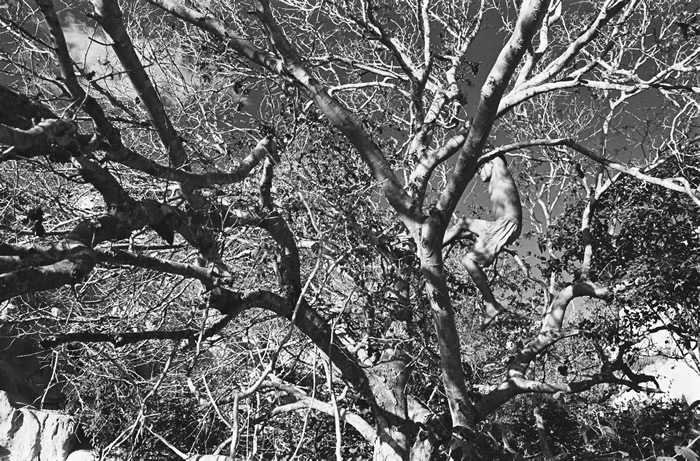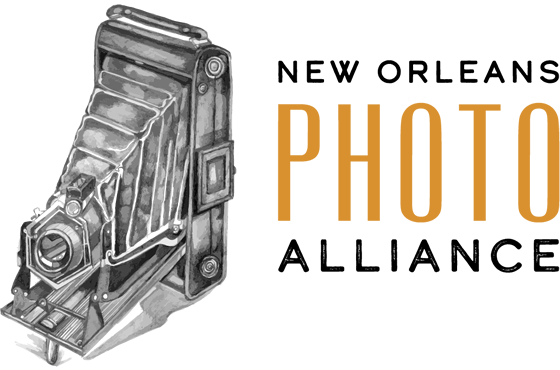
Human Nature in Raso da Catarina: Alvaro Villela
Location:
Jazz & Heritage Gallery
1205 North Rampart St
New Orleans, LA 70116
10 am – 4 pm, Mon – Fri
504-558-6100
Exhibition Dates:
Dec. 3-30, 2009
Opening:
Thursday, Dec 3, 6-8 pm
Alvaro Villela is a Brazilian photographer who lives in Salvador, Bahia.
Human Nature in Raso da Catarina
The first I ever heard about Raso da Catarina was a story of desert, sand and thorn forest, a wilderness without water or mercy. In November 2005 I flew over it by helicopter as a guest of IBAMA, the national environmental protection agency. Seen from the air, the mostly leaden landscape with swathes of red sand was gut-wrenching. As I gazed down at the parched and contorted vastness of this sliver of the heartlands of Northeast Brazil, I was in no doubt why its climate is officially classified as semi-arid, or almost desert: it really was death valley down there.
In October 2006, once CHESF had approved the project for the book, I went to Paulo Afonso to set up the logistics required for the challenge of entering Raso da Catarina. I had to tackle many difficulties, such as finding an experienced guide. Even locating a four-wheel-drive vehicle was harder than expected. It took two months to prepare the expedition, including the search for people and information sources that could reveal the secrets guarded by the place Guimarães Rosa called “the worst desert there is, a wasteland from hell” (in Grande Sertão: Veredas, referring to the fictional Liso do Sussuarão).
Our first sortie into the daunting Raso da Catarina took place in January 2007. Pedro was our guide, driver, cook and factotum. Better known as a farmer, Pedro is a retired employee of CHESF and a connoisseur of the trails and byways that lead into this region, the harshest in the sertão, a godforsaken outback where a goat will often climb on another goat’s back to reach something edible.
Daytime temperatures in the thornbush- and cactus-covered steppe are never less than 40C (104F). Even the teju, a large lizard that loves heat, takes cover in the shade of the desiccated amburana or burrows down into the hot sand until it finds a little humidity, emerging only at night when the temperature falls, as in any desert, to about 15C (60F).
But this eerie place is a paradise for the Pankararé. The gateway to Raso da Catarina is Brejo do Burgo, a village of some 500 Pankararé families in the most humid part of the Indian reservation. They came here after whites evicted them from the banks of the São Francisco. When a water source was discovered at Brejo and the indigenous land was demarcated, many Pankararé who had become acculturated to white society decided to return and settle in the region. While acculturation remains evident, they try to continue preserving their ancestral customs. Rites performed at the sacred Amaro Stone include dancing the Toré and Praiá in adoration of the “Enchanted”, tiny dark-skinned creatures who protect nature. These dances are the acme of indigenous tradition and a cornerstone of the tribe’s cultural identity.
But we found the essence of life in Raso da Catarina at Baixa do Chico, an even smaller and poorer village than Brejo. Here we met Lino, son of the patriarch Saturnino, and his family of some 50 Pankararé. Although Baixa do Chico is the only inhabited place in Raso da Catarina, it’s hardly what you would call an oasis. Confronted by the dusty, scrubby scenery, humble dwellings, desolate church, and expressions of hardship and distrust on local faces, we could easily imagine ourselves back in some past century if it had not been for two pairs of Havaianas rubber sandals and the threadbare jeans worn by one of the headscarved women. But that was only our first impression. The once unworldly peasants of Baixa do Chico have been changed for ever by the two daily hours of television to which they are submitted, quite happily it must be said. A diesel generator supplies enough electricity to power the only TV set in the village from 6-8 p.m. The same generator also drives the pump that pipes water from a 250-meter well to all nine homes in the village.
Over the ensuing months I got to the know the Pankararé well, not least thanks to a productive mutual learning process that included talking about my photographs and holding workshops for children and adults to teach them photography.
Humankind’s immense capacity to survive and be happy is put to the test in these parts. Everything points to the impossibility of living here, but the children’s delightful hubbub as they play the most innocent games, leisurely conversations in the shade of a big tree, partying when a goat is killed to feed a family or grilled armadillo is prepared, all this made me see the minimalism of life in the sertão. A little is a lot: that’s the essence of life in Raso da Catarina.
Region of fables and fairy tales to which children listen in awe, territory of wild horses, magical beings and animals reputed extinct, Raso da Catarina is also famous as Lampião’s hiding-place and is said to bear the name of Baroness Catarina, who hid a treasure there, lost her way, and died of thirst. So the region is named for a woman, like an American hurricane.
Once upon a time even Petrobras was interested in Raso da Catarina, surveying the region for oil in the 1960s. The engineers bored holes, used explosives and carved roads everywhere, paving the way for hunters who literally fell upon the local wildlife. In the 1980s Raso da Catarina almost became a nuclear waste disposal site.
The quintessence of the sertão is precisely here in Raso da Catarina, marked by the signs of social banditry led by Lampião and of the messianism spearheaded by Antônio Conselheiro. Time here passes far more slowly. Unlike any nature reserve, Raso da Catarina melds fantasy and reality so closely that they can no longer be distinguished from each other. Headless mules and fire snakes, for example, stalk the territory freely, and shades of rifle-toting cangaceiros spook the mounts of unwary cowhands. Power pylons sprout from the ground like the mandacaru cactus in winter, and high-voltage cables are entwined with the misshapen vegetation. The region sustains more than geographical splendor and endangered wildlife. It is the last refuge for one of the best protected treasures of the sertão, a wealth that neither glitters nor can be touched: the ancestral memories of the sertanejo. It conserves places where an old man’s eyes sparkle when someone says this was once the sea and shells can still be found in the soil. Some remember travelers who lost their way and never returned. A boy squatting at his front door while playing with dry corn cobs tells stories of Lampião’s heroic deeds and stratagems for outwitting the government troops. There is a grain of truth in all these tales, because solitude makes fantasy a haven.
– Alvaro Villela

